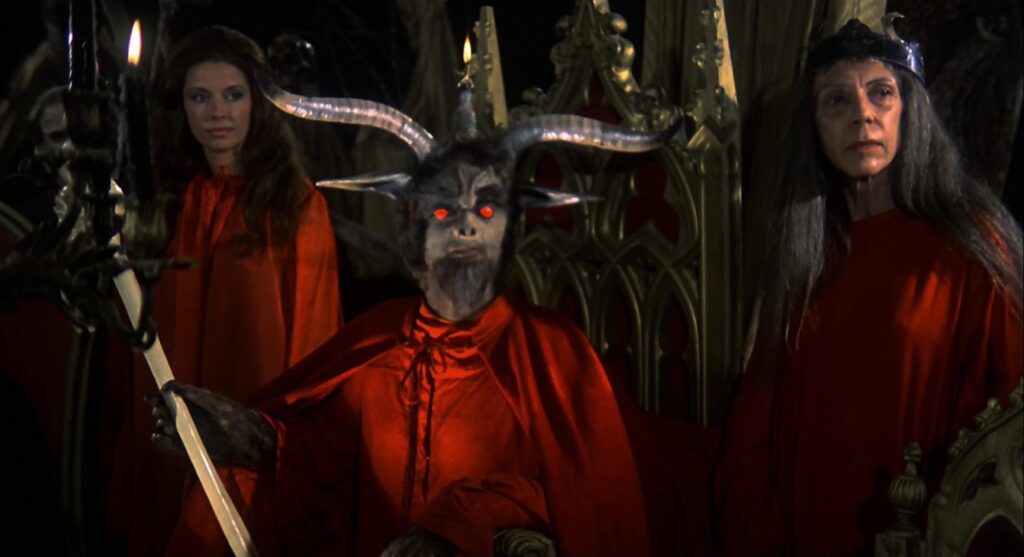
Paul Naschy’s debut film as a director is a rather pulpy take on Witchfinder General (1968) with more nudity and gore. Naschy’s Inquisition (1976) casts the director in three dramatic roles, two of which are theological in nature. The shared face of Paul Naschy representing both Satan and the Catholic Church equates the two as systems of oppression, exploitation, and mass murder.
The premise is simple; an Inquisitor named Bernard de Fossey (Naschy) arrives in a small French village and is smitten by Catherine (Daniela Giordano) who embraces witchcraft to exact her revenge on de Fossey after he murders her lover. The structure of the narrative suggests that the fates of these characters are inevitable and that both God and Satan are an illusion. This isn’t the most complex of concepts but it is conveyed in a compelling manner with a lot of visual stylization on Naschy’s part.
The most cinematic moments in Inquisition are the scenes of the witches’ Sabbat. These dreamy sequences unfold on a black sound stage with minimal set dressings as if the characters were trapped in a tableaux lost in a void. These sequences recall Powell and Pressburger’s fantasia’s whilst predicting the campy masterworks of Anna Biller. In this sea of blackness there are technicolor reds of blood and flesh tones of naked women drifting all around the central figure of Satan himself. It’s an evocative scene that shows Naschy at his most inventive.
Inquisition tends to struggle on the visual level in more dramatic scenes with plenty of dialogue. An actor first, Naschy clearly prioritizes the coverage of his cast. This renders many of these sequences almost like a filmed stage play. The camera hardly moves at moments where more complex blocking could have added something to the scene.
